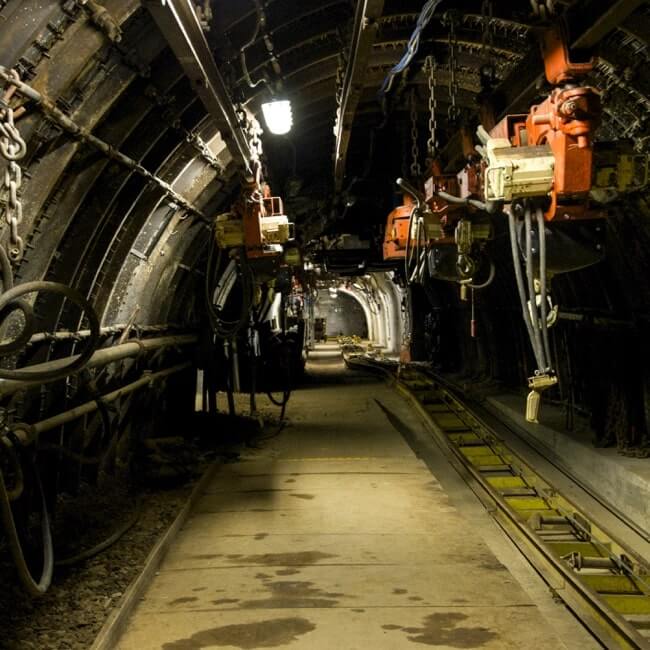Mexican government to start four passenger train projects in 2025

This is an automated translation of the press release issued in Spanish
- AIFA-Pachuca , Mexico-Querétaro , Saltillo-Nuevo Laredo and Querétaro-Irapuato will be the first sections, said the head of ARTF , Andrés Lajous Loaeza , before President Claudia Sheinbaum Pardo.
- The global budget for all train projects in 2025, considering the Mayan Cargo Train and the Interoceanic Train , will be 157 billion pesos, he highlighted.
- DEFENSA will begin works on AIFA-Pachuca and Mexico-Querétaro; SICT will tender the Querétaro-Irapuato and Saltillo-Nuevo Laredo sections, in addition to the first fleet of rolling stock (trains).
- An interdisciplinary team composed of SICT, DEFENSA, SEDATU , SEMARNAT , CONABIO , CONANP , INAH , INPI , state and municipal governments works on the projects.
The Government of Mexico, through the Ministry of Infrastructure, Communications and Transportation (SICT) and an interdisciplinary team, will carry out preparatory work next year to begin construction on four sections of the passenger train: AIFA-Pachuca, Mexico City-Querétaro, Saltillo-Nuevo Laredo and Querétaro-Irapuato.
The above was announced by the head of the Railway Transport Regulatory Agency (ARTF), Andrés Lajous Loaeza, before President Claudia Sheinbaum Pardo and the head of SICT, Jesús Antonio Esteva Medina.
“Considering the set of train projects that will be executed next year and additionally the Maya Cargo Train, the Interoceanic Train tracks, the global budget is 157 billion pesos for the year 2025 for all train projects,” he stressed.
In the first half of 2025, the Ministry of National Defense (DEFENSA) will begin construction work on the AIFA-Pachuca train and the Mexico-Querétaro train.
SICT will tender works on the Querétaro-Irapuato and Saltillo-Nuevo Laredo sections. At the same time, the tender for the first fleet of rolling stock, that is, the trains that will be operating, will be held.
At a press conference at the National Palace, Lajous Loaeza said that an interdisciplinary team composed of SICT, DEFENSA, the Secretariat of Agrarian, Territorial and Urban Development (SEDATU), the Secretariat of Environment and Natural Resources (SEMARNAT), the National Commission for the Knowledge and Use of Biodiversity (CONABIO), the National Institute of Anthropology and History (INAH), the National Institute of Indigenous Peoples (INPI), as well as state and municipal governments, are carrying out the preparation of the projects.
He added that the passenger trains will provide intercity (city to city) and regional services with dedicated tracks at maximum speeds of between 160 and 200 kilometers per hour, with main and secondary stations.
The objective is to achieve:
- Reduce travel times
- Better travel experience and comfort
- Greater security
- Quality of life
- Reducing carbon footprint
- Connectivity between communities
He explained that during the administration of President Claudia Sheinbaum Pardo, more than 3,000 kilometers of passenger roads will be built on the AIFA-Pachuca, Mexico-Nogales and Mexico-Nuevo Laredo routes, among others. This will be done under a four-phase implementation strategy that will total 3,393 kilometers:
The AIFA-Pachuca (54 km), Mexico-Querétaro (242 km), Saltillo-Nuevo Laredo (306 km) and Querétaro-Irapuato (184 km) sections totaling 786 km. The Querétaro-San Luis Potosí (263 km), Mazatlán-Los Mochis (441 km), and Irapuato-Guadalajara (206 km) routes totaling approximately 910 km.
Another 1,145 km with the Guaymas-Hermosillo (135 km), Guadalajara-Tepic (204 km), San Luis Potosí-Saltillo (444 km) and Los Mochis-Guaymas (362 km) routes. And 552 more kilometers with the Tepic-Mazatlán (275 km) and Hermosillo-Nogales (277 km) trains.
The head of the ARTF recalled that, in 2018, during the administration of President López Obrador, passenger trains returned with the projects of the Interoceanic Train of the Isthmus of Tehuantepec, the El Insurgente Train and the Maya Train with a global budget of 157 billion pesos.
This follows a process of privatization and predominance of freight trains that began in 1995.
--o0o--
Subscribe to the leading business intelligence platform in Latin America with different tools for Providers, Contractors, Operators, Government, Legal, Financial and Insurance industries.
News in: Infrastructure (Mexico)

Mexican construction chamber calls for creation of education infra fund
Thousands of elementary and secondary schools lack the most basic services, according to the chamber.

Army to build Sheinbaum’s first flagship infra project
The 64km passenger line will connect Felipe Ángeles international airport outside Mexico City with Pachuca in Hidalgo state.
Subscribe to Latin America’s most trusted business intelligence platform.
Other projects in: Infrastructure (Mexico)
Get critical information about thousands of Infrastructure projects in Latin America: what stages they're in, capex, related companies, contacts and more.
- Project: Modernization and expansion of Puerto Tampico terminals (ex New multipurpose terminal at Tampico port)
- Current stage:

- Updated:
2 months ago
- Project: Sky Train Baja (Tijuana - Rosarito Elevated Train)
- Current stage:

- Updated:
2 months ago
- Project: Atlacomulco - Polotitlan highway
- Current stage:

- Updated:
2 months ago
- Project: Expansion of the Guadalajara International Airport
- Current stage:

- Updated:
2 months ago
- Project: Rehabilitation and Conservation of the Toll Free Highway Network in Tejupilco, Ixtapan de la Sal and Toluca (Caminos del Sur)
- Current stage:

- Updated:
2 months ago
- Project: Puerto Lázaro Cárdenas Specialized Container Terminal II (TEC II) Phase II
- Current stage:

- Updated:
2 months ago
- Project: Mi Macro Periférico Expansion
- Current stage:

- Updated:
2 months ago
- Project: New Agustín O'Horán Hospital
- Current stage:

- Updated:
2 months ago
- Project: Elevated Viaduct Playas de Tijuana
- Current stage:

- Updated:
2 months ago
- Project: Mante - Ocampo - Tula Highway (Tam-Bajío)
- Current stage:

- Updated:
2 months ago
Other companies in: Infrastructure (Mexico)
Get critical information about thousands of Infrastructure companies in Latin America: their projects, contacts, shareholders, related news and more.
- Company: TFS Turbine Field Solutions, S.A. De C.V. (Turbine Field Solutions)
-
The description included in this profile was taken directly from an official source and has not been modified or edited by the BNamericas’ researchers. However, it may have been...
- Company: Consorcio Doppelmayr México - Grupo INDI
-
Doppelmayr México Consortium - Grupo INDI is a company formed by Doppelmayr México S.A. de C.V. and Grupo Indi, S.A. de C.V. for the execution of the Uruapan Cable Car project, ...
- Company: Acre México
-
The description contained in this profile was taken directly from an official source and has not been edited or modified by BNamericas researchers, but may have been automatical...
- Company: Grupo Aeroportuario del Pacífico S.A.B. de C.V. (GAP)
-
Mexican airport operator Grupo Aeroportuario del Pacífico S.A.B. de C.V. (GAP) administers, operates and maintains 12 airports in the Pacific region of Mexico. Based in Guadalaj...
- Company: Grupo Tradeco S.A. de C.V. (Tradeco)
-
Mexican group Grupo Tradeco S.A. de S.V. is principally engaged in the construction of infrastructure and urban works, industrial development, and highway maintenance services. ...
- Company: Ingeniería de Proyecto y Supervisión S.A. de C.V. (INPROS)
-
The description contained in this profile was taken directly from an official source and has not been edited or modified by BNamericas researchers, but may have been automatical...
- Company: Henkel Capital, S.A. de C.V. (Henkel México)
-
The description contained in this profile was taken directly from an official source and has not been edited or modified by BNamericas researchers, but may have been automatical...
- Company: Ingenieros Civiles Asociados S.A. de C.V. (ICA México)
-
Ingenieros Civiles Asociados is a Mexican provider of construction services for the development of heavy urban works and specialized infrastructure projects in the country. In 2...
- Company: Carso Infraestructura y Construcción, S.A.B. de C.V. (CICSA) (CICSA)
-
Carso Infraestructura y Construcción (CICSA) is a Mexican company belonging to Grupo Carso's infrastructure and construction division. The firm is involved in the development of...




